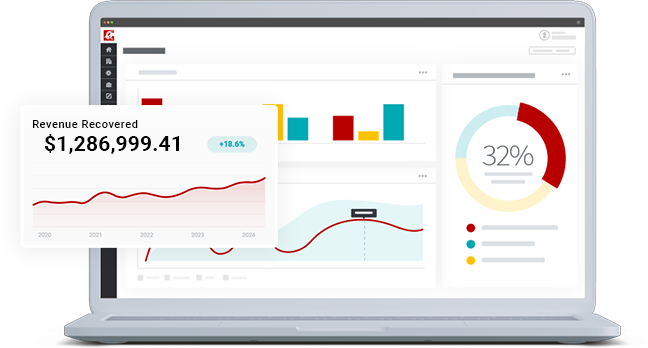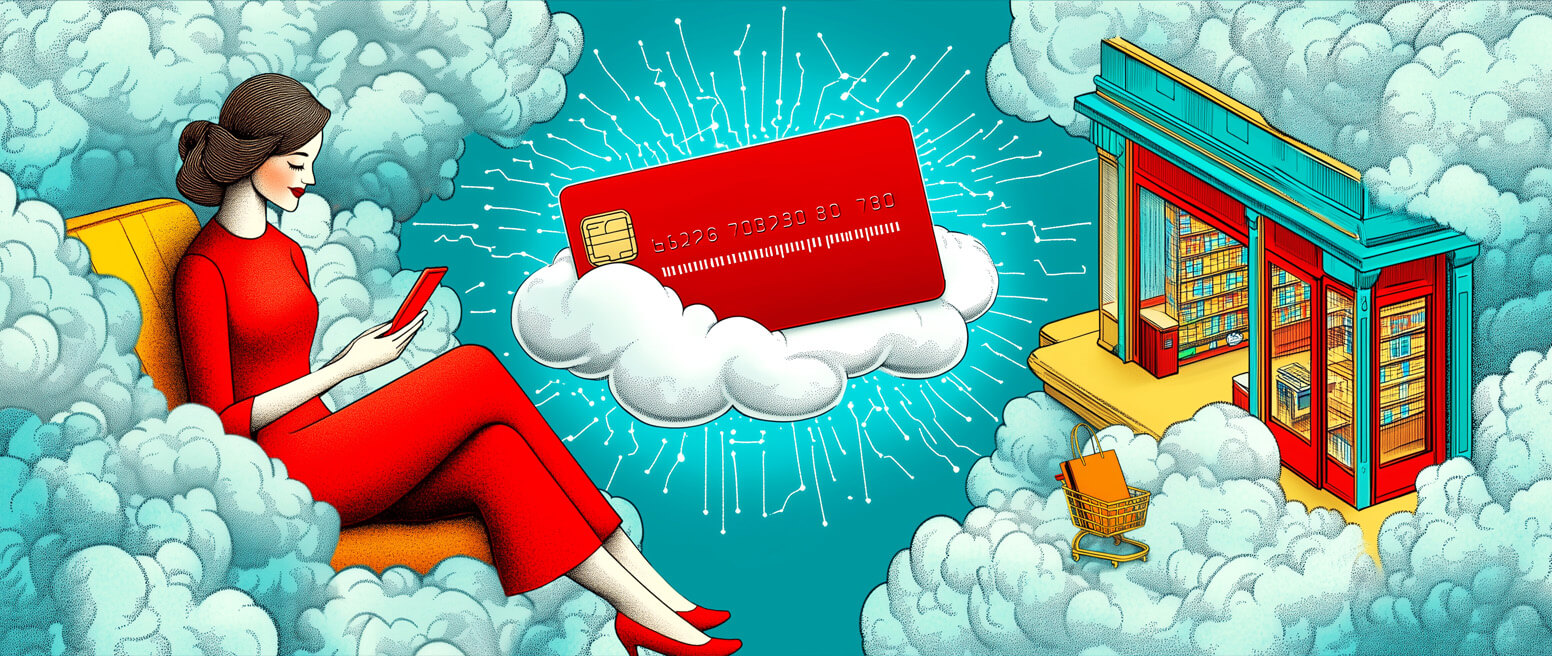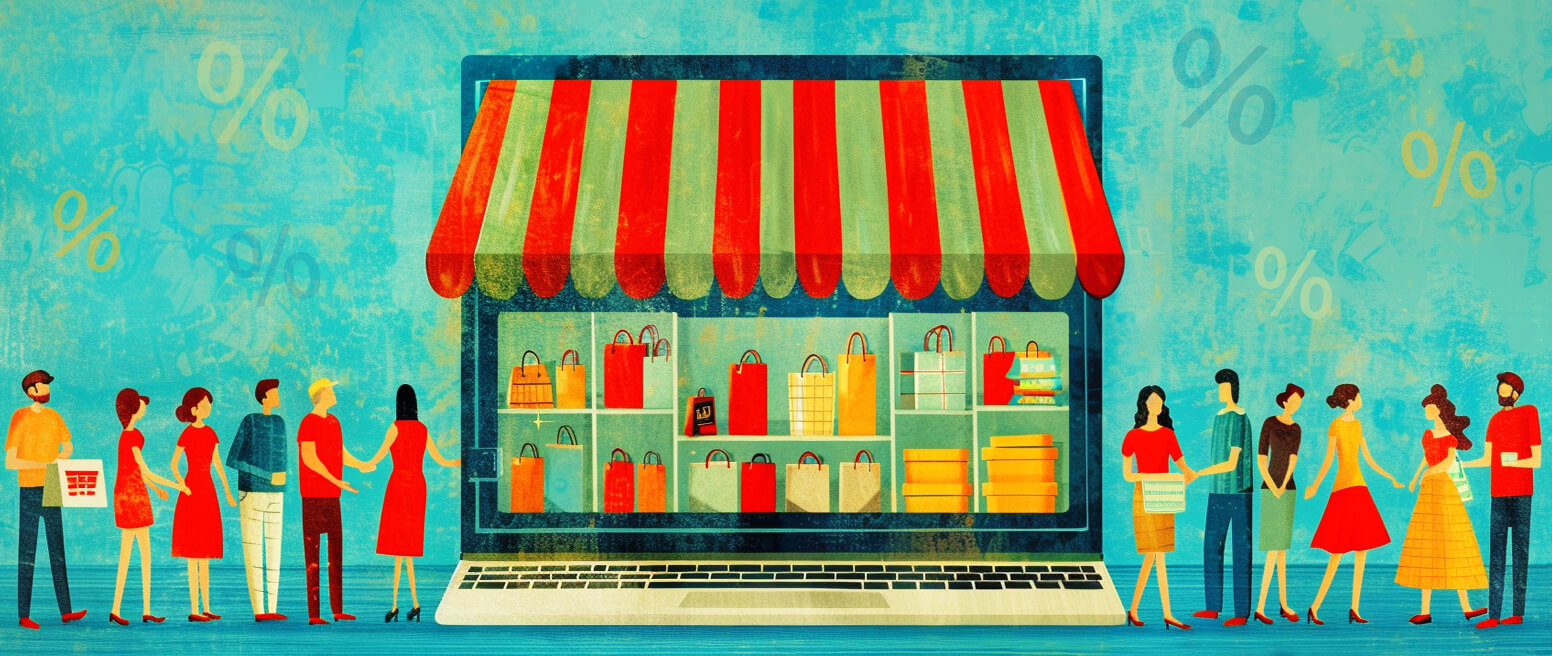The Value — & the Necessity — of eCommerce Personalization in Contemporary Commerce
Online shopping has come a long way since Jeff Bezos first got the idea to open a book store online.
Global eCommerce revenue is expected to hit $4.32 trillion in value in 2025. And, it could continue to grow at an annualized rate of more than 8% until the end of the decade. By 2030, the eCommerce market as a whole may be worth $73.5 trillion.
This growth is in large part thanks to how easy it is to access digital experiences through internet-connected devices like smartphones and desktops.
But, that’s not the whole story. While the internet is helping customers access your site, what’s keeping them there — and enticing them to buy — is a compelling, personalized experience that uses data-driven approaches to recommend tailored products and customized promotions.
In this article, we’ll take a closer look at personalization to explore how it drives performance, decreases churn, and exceeds user expectations. We’ll also explore some real-world examples to draw from, and outline a few pitfalls you need to avoid.
Recommended reading
- Card-Not-Present Transactions: Know the Risks & Rewards
- Top 15 Customer Returns Reasons in 2025 & How to Avoid Them
- Online Shopping vs In-Store Shopping: the Future of Retail?
- They’re Here — Cyber Week 2024 Stats & Analysis!
- What is a Return Customer Rate? How to Calculate Your RCR
- Prime Day 2024: How to Avoid Chargebacks on the Big Day
What is eCommerce Personalization?
eCommerce personalization is the practice of providing tailored experiences, recommendations, and discounts to customers based on their location, past purchase behavior, frequently viewed items, and average order value (AOV), and behavioral patterns.
Customers who encounter personalized experiences benefit from more enjoyable and relevant shopping journeys. Merchants who manage to offer good experiences see decreased bounce and churn rates, along with improved conversion rates and higher average order values (AOVs).
In practice, a buyer who visits a personalized eCommerce store should not feel that they are visiting a nameless, faceless website. They should feel that the merchant knows them and their preferences. It’s like walking into your local coffee shop where the barista greets you by name and knows your usual order.
This is totally possible with modern technology. You can use your customer’s first and last name provided during signup to greet them every time they login or checkout. That’s just one example; as we’ll explore in the following sections, there are dozens of other personalization tactics you can explore.
eCommerce Personalization: By the Numbers
Shoppers no longer see personalization as a “nice-to-have” shopping experience. For many, personalization (or the lack of it) is a dealbreaker, and merchants are taking notice.
Merchants are embracing personalization because it’s proven to attract customers and drive revenue. A 2024 Boston Consulting Group (BCG) study found that personalized offers are more than three times as profitable as mass promotions. Simply making on-site product recommendations can drive incremental revenue for retailers by as much as 20%.
There’s a good reason for this correlation between profitability and customer satisfaction. Simply put, customers are more likely to buy when the content, products, and services they’re recommended are tailored, relevant, and specific to their wants and needs.
of eCommerce merchants express interest in launching personalized, tiered, and co-branded loyalty programs.
Source: Deloitte
How AI Technology is Impacting eCommerce Personalization
The landscape in regards to AI is so flexible, you could still have a first-mover advantage, even if you act now. According to the BCG data cited above, “retailers on average are investing less than 5% of promotional spending in personalized offers, and many large retailers invest 1% or less, in part because category-focused merchant teams are reluctant to give up control over trade dollars.”
You don’t even need to completely overhaul your current approach to benefit from personalization. Incremental approaches, like upgrading from traditional segmentation techniques to data-informed, generative AI-enabled approaches that allow for hyper-personalized 1-on-1 experiences at scale, and can help you unlock topline growth.
of eCommerce merchants plan to implement AI and machine learning to facilitate personalization in the coming year.
Source: Deloitte
of merchants say they want to use AI-recommended personalized discounts and promotions to attract and retain customers.
Source: Deloitte
What you do need to do, however, is ask yourself:
- Is your content reaching customers where they are?
- Does your content make suggestions based on individual preferences?
- Does your content offer promotions based on browser preferences?
Is your system able to check in with frequent site visitors and regular customers?
If you can’t answer each of these questions in the affirmative, then exploring how to augment your eCommerce personalization strategy with AI and machine learning should become your new priority... stat.
Better customer experiences. Fewer chargebacks.
The solution for both is just a click away.
Request a Demo
How Merchants Benefit from Personalization for eCommerce
So, what do you stand to gain from taking this approach? eCommerce personalization offers a number of benefits, including:
These are just a few benefits. eCommerce personalization can help with anything from streamlining your data insights to reducing your chargeback issuances.
eCommerce Personalization Techniques
Okay. So, we’ve covered the importance of eCommerce personalization. How do you actually provide that personalized experience, though?
A successful eCommerce personalization strategy, like a robust chargeback management strategy, should be a multi-pronged approach that makes use of several complementary tactics simultaneously. Tactics include:
Data Sources for Effective Personalization
So far, we’ve talked about how you can personalize shopping experiences for buyers. But where does the data that informs those recommendations come from?

5 Real-World Examples of eCommerce Personalization
So, now that we understand why personalization is so important, let’s take a look at several companies that are leading the way in showing how to deploy this strategy.

Amazon
The personalization experts at Amazon continue to meet and exceed customer expectations with each passing year. Innovations Amazon has pioneered, such as 2-day shipping and simplified returns, have completely upset the retail apple cart in the last decade. In fact, many stores and retailers have had to rethink every aspect of their business due to Amazon’s daring approach to eCommerce.
When a consumer lands on the Amazon homepage (through a browser), they are presented with the following navigation options:
- Recommended for you
- Recently viewed
- Buy it again
All of these sections are tailored to each user based on their interactions with the site, according to browsing history and preferences. This also includes the lists themselves. Each category will be moved around a user’s dashboard according to the most-visited or most-clicked categories. This user interface is seamless in both desktop and mobile formats.

Netflix
Netflix built its entire platform based on personalized user experience. Because of this, every user’s dashboard is tailored specifically to their interests. So, no two Netflix accounts have the exact same appearance.
To accomplish this, Netflix utilizes a combination of AI and machine learning algorithms to curate and promote content. These systems are capable of distinguishing an individual user from another and providing them with content that most aligns with their interests and browsing history.
The dashboard usually features categories like “Because You Watched” or “More Content Like,” which are populated based on the user’s activity. These categories will change and move according to your browsing patterns, watch history, or bookmarked shows.

Sephora
Sephora is another company with personalized content that really shines. Over the past five years, the company has consistently ranked near the top of Sailthru’s Retail Personalization Index. The driving force behind this is its mobile app, which deploys augmented reality technology to let shoppers ‘try on” various looks and styles. This is powered by facial recognition and machine learning technology.
The app gleans information about the user through various quizzes and analysis, then allows the user to try their products on their own face via several filters. This essentially lets shoppers browse and test several “looks” on their own face, in one session, and all without ever leaving their home.
Innovative styling tech aside, the app also offers seamless omnichannel shopping with just a few taps. Every purchase a shopper makes, what they browse, the styles they most often gravitate toward — all this information is made available via mobile or in-store. It also allows them to book in-store and online consultations, and provides customers with top notch promotions and loyalty rewards.

Starbucks
Starbucks is one of the most visited retail locations on the planet, selling an estimated four million cups of coffee every day. Naturally, the company would want a way to connect better with their customers, and encourage more personalized experiences.
To deliver this, the company crafted a highly intuitive app that remembers customers’ names, orders, birthdays, favorites, and past activity. The app also features personalized maps and directions to convenient locations through geolocation, and offers seamless online ordering and pickup notifications. The app also tailors promos and loyalty reward offers to each customer based on their preferences.

Target
With a $100 billion market evaluation, retail giant Target was one of the first to reap the benefits of increased personalized content. The company has deployed the method so successfully, in fact, that they are currently expanding their efforts to challenge Amazon for the top spot on this list.
The company is soon to release several new omnichannel features, including better location-based products and marketing and improved showrooming and price matching. This is in addition to their groundbreaking shop-in-shop concepts like in-store Starbucks, Ulta beauty counters, and Levi’s denim shops. These investments promote each brand, both online and in-store, through increasingly personalized mobile content intended to promote each brand through a uniform Target branded framework.
The company boasts 2,000 physical locations, BOPUS options, and various elite partnerships. Enhanced personalization has helped them achieve this potential.

Are There Any Drawbacks of Personalization?
We’ve been singing the praises of personalization for a while now. However, there are a few points of concern that you need to consider once you decide to invest in more personalized content. These include:
All that said, the only serious “con” you’re likely to run into regarding increased personalization is the lack of it.
Most major retailers now offer personalized product recommendations, personalized emails with individualized promotional content, and advanced profiling systems. These let customers define their means of interacting with the business.
When these elements aren’t present, customers may buy things that weren’t exactly what they hoped for, weren’t specifically targeted toward them, or generally weren’t what they were looking for in the first place. Buyer’s remorse is one of the leading causes of chargebacks and friendly fraud, for instance. You can drastically reduce this problem by increasing personalization at the consumer level.
How to Get Started
eCommerce personalization offers compelling and obvious benefits with few drawbacks. So, how can you implement it in your eCommerce business?
Here, tools and integrations can do much of the heavy lifting. But it’s not a “set-it-and-forget-it” approach. Instead, you should:
#1 | Collect The Right Data
Holistic datasets that accurately inform you about who your customers are and what tastes they have are foundational to a successful personalization strategy.
That’s because all of your tailored suggestions will be based on what you know about your customers. If your knowledge about your buyers is disjointed or incomplete, you risk providing poorly personalized or irrelevant recommendations… which is arguably worse than no personalization at all.
In practice, this means you’ll need to collect both explicit and implicit first-party data about your customers. Explicit data includes information gleaned from satisfaction surveys, products your customers reviewed, and items they’ve “favorited,” while implicit data encompasses product page dwell times, geolocation and IP address information, and previous purchase patterns.
#2 | Choose the Right Tools For Your Store Size/Budget
Next, you’ll need to select and integrate personalization tools. These software solutions can be from free, or they can cost five figures or more per month. You’ll need to choose tools that work for your store size, budget, and hosting platform.
Before settling on a solution, consider your pain points. For example, which parts of your buyer funnel are the leakiest? Are you experiencing high bounce rates or cart abandonment rates? How many SKUs do you sell? Is your inventory varied enough for personalization engines to deliver helpful cross-selling recommendations? Knowing where you stand can help you determine the personalization features most important to you.
Also examine offerings to make sure they check all “must-have” capabilities. Support for AI-powered recommendation approaches, real-time analytics, privacy and security features, and tight integrations with your existing tech stack should all be priorities.
#3 | Test & Optimize Personalization Strategies
Successful personalization will require continuous testing and refinement. Once your initial personalization campaigns are in place, you’ll need to monitor their performance and tweak them based on new data you collect.
A/B testing your personalization algorithms, product recommendations, or email and SMS messaging can reveal what’s driving conversions and revenue, and what’s not effective.
Be sure to pay close attention to how your customers are interacting with personalized elements. For example, are product recommendations driving revenue from cross-sells? Is it more effective to recommend additional products earlier or later in the buying journey? What percentage of customers interact with personalized elements?
Then, learn and iterate off user behavior and feedback. Doing so can ensure that your personalization strategies remain relevant to your customers and impactful for your topline over time.
#4 | Set Realistic KPIs
What isn’t measured can’t be managed, so make sure to rigorously and continuously benchmark your personalization initiatives against realistic key performance indicators (KPIs).
These metrics should align with your broader revenue and profitability goals, and can include conversion rates (at each stage of the buyer journey), AOV, repeat order rates, customer lifetime values (LTV), and click-through rates on personalized content or recommendations.
#5 | Track & Evaluate ROI
At the end of the day, eCommerce personalization is only successful if it delivers a return on investment. That means the incremental revenue attributable to personalization should exceed the one-time and ongoing costs of implementing and maintaining your personalization strategy (including tool subscriptions, data collection efforts, and personnel time).
Of course, ROI isn’t static, so make sure to track trends over time. Are returns increasing or diminishing? Are any new approaches driving additional revenue? Which KPIs appear most closely correlated with revenue growth?
Tying all of these steps together can help you gradually optimize your approach to eCommerce personalization.
Have additional questions about optimizing your site to attract customers and prevent loss? Click below and speak with one of our eCommerce experts today.
FAQs
What is eCommerce personalization?
Personalized marketing is a business strategy that curates content to directly target an individual user based on data the company collects from that user over time, such as purchasing history, browsing history, demographics, and geolocation.
Why is personalized online shopping important?
Personalization isn’t just a customer interest, it’s a hard demand. If you don’t provide customers with the ability to browse products according to personal preferences and/or customize those products to some degree, they will shop somewhere that does.
Do I need an eCommerce personalization platform?
If you’re an eCommerce retailer, then yes. Companies that prioritize personalization tend to generate more revenue. According to a study by McKinsey and Company, companies that have invested in personalization often earn 40% more revenue than their counterparts. Personalization pioneers like Target and Amazon, for example, aim to reach the right person at the right moment. This approach is expected to have generated around $1 trillion in revenue through 2022.
What are the benefits of personalization for merchants?
eCommerce personalization is an ingenious way to bridge the gap between retailers and the audiences that are specifically looking for their goods and services. Better yet, personalization also helps merchants retain those customers, too.
Some of the key benefits of personalization include increases in conversion, learning, feedback, engagement, leads, retention, revenue, and sharing. Also, personalization is effective at decreasing overhead costs, and can lead to fewer chargebacks.
What are personalization and customization strategies in eCommerce?
Personalization refers to using customer data to automatically deliver product recommendations and bespoke services based on a customer’s past purchases, browsing history, and behavioral patterns. On the other hand, customization is a manual process that allows customers to pick and choose their product recommendations based on individual preferences.
Both are strategies eCommerce merchants use to tailor users’ shopping experiences to meet their individual needs.
What is an example of website personalization?
A good example of website personalization is including "recommended for you,” “free shipping on orders above $100” or “recently viewed” sections on website homepages when clients sign up or log in.














